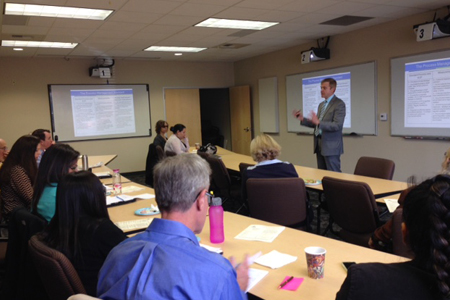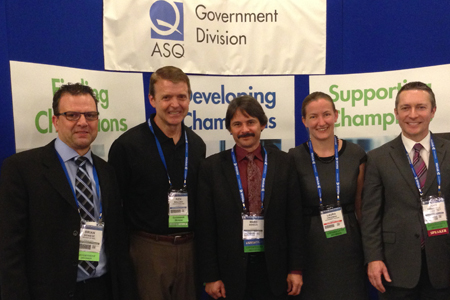
It never occurs to those in the quality industry that all of our standards violate a primary rule of lean practice – we build them as push systems rather than pull systems! They all depend on top leaders to recognize and push whatever standards are being talked about at the moment – from quality management overall, to risk, to safety to environmental awareness to whatever — as if our leaders had nothing else to do!
At present, the essence of every standard, from ISO 9001, to ISO14000 to ISO31000 to Baldrige, is that top leadership communicate the importance of the use of the standard. We also expect that top leaders make sure subordinate management and employees are aware of their roles and responsibilities under the standard, and that our top leaders include performance under the standard in their annual evaluation. The basic truth is that we in the quality industry have developed professional best practices (or standards) in multiple areas of organizational performance which we have upwardly delegated to top managers! We expect top managers to help us nag the mid-level of the organization to jump to it! A classic push system.
Who of us believe that all our Senior Executives have to do is to run the multiple standards programs on which the organization must depend! Yet we continue to develop standards in new operational areas and push them upward to senior leaders. And even if senior mangers do undertake our jobs as practice area leads, every-time leadership changes the whole thing falls apart.
It does not have to be this way, and a set of standards developed by the American Society for Quality Government Division is creating a new model for the future, in which the basic and fundamental role for standards will be re-aligned from the bottom-up. The new standard, called “Guidelines for Evaluating the Quality of Government Operations and Services,” is currently recommended for adoption by the American National Standards Institute, and are expected to be final this Spring.
At last, we will have pull system for quality, because a set of documented operational practices will be required of every manager and supervisor in a manner that reflects the management practices they should have regardless, and that include quality practices as a part. These leaders will “pull” on organizational specialists to help them develop their operational best practices, and to obtain a peer review, so that it can be posted on a visible organization-wide scorecard. The standards include a process- and system-maturity model, which allows peer review and objective scoring of the best practices of each manager and supervisor. Because each manager and supervisor will have continuing reviews of their operations objectively scored and reported, upper management will be able to see the maturity of their quality practice! All managers and supervisors will then be motivated to participate because of its visibility.
And because these plans will define all the component parts of an entire organization, they will also include the necessary tasks and actions for quality management systems, or environmental safety, or risk management – at the level in which they must be completed.
The standard can be downloaded at https://my.asq.org/communities/files/155/6210, and while the work is currently envisioned as applying primarily to government and the non-profit industry, the model is applicable everywhere.
The basis of the new standard is simple, and requires a focus on the “atomic particles” of quality and of management practice – the processes and systems that define the work flows that each manager and supervisor use. (And this includes the workflows of Executive Offices, and Program Offices as well.) The operational foundation of the new standard is a process maturity model, and a system maturity model – both of which have objective and measurable criteria through which the maturity of quality practices can be measured.
Each of the maturity models includes a maturity scoring matrix, so that uniform, objective scores that reflect the quality of management practices in each unit are possible, and these scores can be includes on a visible scorecard that defines the practices of the organization. For example, the process maturity model uses three criteria for its scoring, including a standardized process flow; a developed scale of leading and lagging measures; and the inclusion of engaged front-line workers in cycles of improvement. The system management standard uses criteria similar to those defined in the process model, but also adds a fourth scored criteria for risk management.
The standard begins with a presumption that supervisors and managers at the front line will develop best practice models of their value creating processes and systems. The development and use of these best practice models will be a continuing responsibility and a proof that they are fulfilling their role as leaders.
Once it is understood that every leader will be held accountable for documenting best practice operational models, then higher level managers will also be held accountable for aligning and improving the systems that are presented. In this way leaders at every level of an organization will be challenged to develop a best practice operations approach. The process and system models presented in this standard have been structured to be evaluated through objective measurements, developed regularly by internal auditors or reviewers. The models provide for scoring maturity levels and the capability of individual units, and of the organization as a whole.
These maturity models are predictive in nature since they illustrate the effectiveness of an organization’s foundational systems and processes and the resulting level of risk. This standard documents a methodology for structuring and making visible process and system maturity scoring to provide a benchmark for the effectiveness, capability and risk of any program or office. It also offers a challenge for future improvement in a manner that can be objectively analyzed.




